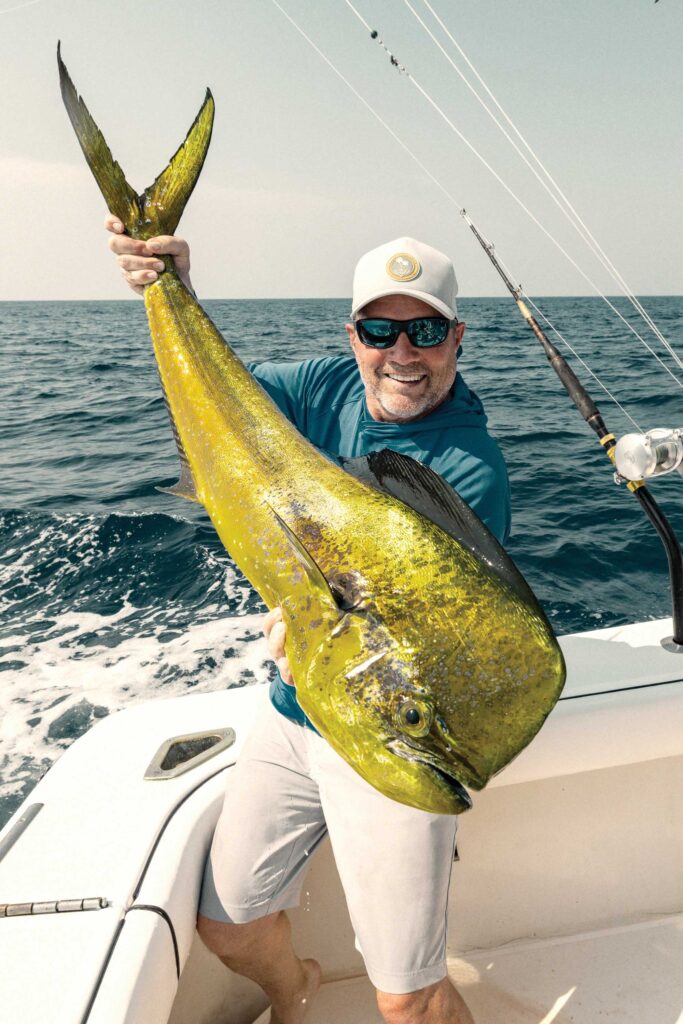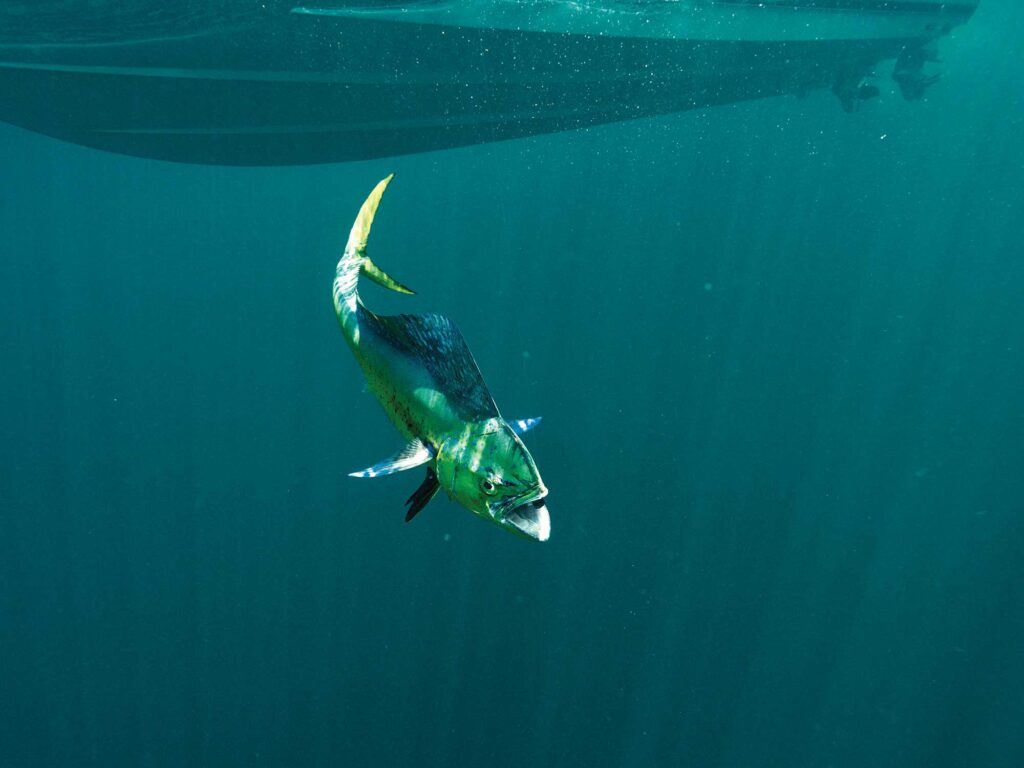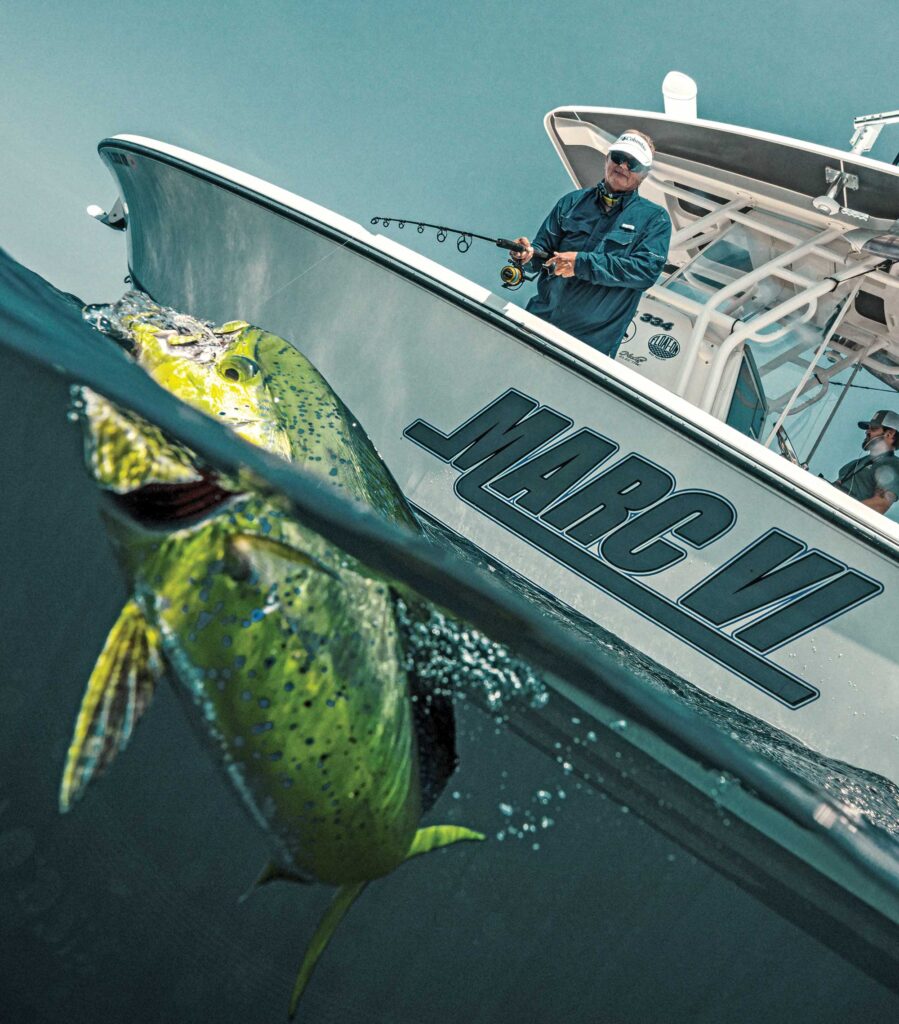Targeting Mahi During the Second Migration
 Mahi is a worldwide offshore favorite. Florida Keys anglers have opportunities at 30-pounders in October.
Courtesy Columbia
Mahi is a worldwide offshore favorite. Florida Keys anglers have opportunities at 30-pounders in October.
Courtesy Columbia
If you missed catching mahi off the Florida Keys during the spring run, don’t fret. There’s a second opportunity right now—between August and October—when another migration pushes through these waters.
A Second SeasonIn recent years, anglers encountered consistent and sometimes better fishing for mahi in the Florida Keys beginning in mid-August. This secondary migration peaks in September and continues into October, given mild weather. School-size fish tend to be larger this time of year. And there’s still a solid chance at cracking that 30-pound mark. What’s more, the waters are far less crowded. It’s one of my favorite times to target mahi in the Florida Keys.
Many believe this is a new mahi season. However, I’ve targeted mahi off Key Largo this time of year since the late 1970s. I have photo albums full of friends and myself with solid catches made in September, including fish weighing more than 30 pounds. This second mahi season rivals the first run—and often exceeds it recently—given the pressure on these fish and warming surface waters.
Old salts back in the day believed these mahi were simply spring-run fish migrating back south and rounding the Florida Keys, fattened up a bit. Recent data now indicates this is a second migration coming up from the Caribbean. Regardless, this time of year has long been established as a peak mahi period throughout the Florida Keys.
 Why not try catch-and-release fishing for mahi? But only after keeping a few larger specimens with plenty of meat, of course.
George Poveromo
Tweaking Your Strategies
Why not try catch-and-release fishing for mahi? But only after keeping a few larger specimens with plenty of meat, of course.
George Poveromo
Tweaking Your Strategies
Tactics for the second mahi season mirror traditional searches for weed lines, debris and birds. However, birds thin out during fall, making it harder to locate migrating fish. Running-and-gunning is popular in this fishery in spring, but trolling becomes more advantageous right now.
Most of our early fall successes come on weed lines and scattered weeds rich with bait. I’ll stop by the floating structure and fan-cast a topwater plug such as the Rapala Magnum Xplode 130. If mahi are near, they’ll clobber the plug or follow it to the boat. That’s when we can use spin tackle to catch them.
If mahi don’t respond to the chugger, but the area looks promising, we’ll deploy a pair of flat lines and troll for 30 minutes. This tactic has proven very fruitful during this period. In one instance, YouTuber Erica Lynn and I dragged two baits along a bait-rich line and limited out on mahi in short order. If fish are hanging along a weed line, you can rack up the numbers quickly by putting out a full trolling spread.
Follow the Flying FishFlying fish are an overlooked indicator. Note the zones where they’re in, and troll if traditional surface findings are nonexistent. One caveat when fishing pockets of flying fish: Mahi often selectively feed on them and ignore other offerings. To crack that code, mimic the size and coloration of these flyers with your baits. For example, if the flyers are small, we’ll troll small ballyhoo with tiny blue-and-silver skirts. If the flyers are large, medium-size skirted ballyhoo get the nod.
A more recent advantage for mahi, especially later in the season, is locating strong plankton concentrations. Fish Mapping, from SiriusXM Marine available on Garmin, Simrad and Furuno displays, reveals the whereabouts and strengths of plankton fronts. Of all the Fish Mapping features, I find this the most useful. Strong plankton concentrations attract bait—including flying fish. Given good bait concentrations, mahi and other gamefish should be around. I recall three distinct fall days when strong plankton fronts led us to mahi, with no other surface features around.
Read Next: The Importance of Protecting Mahi
 To hold a mahi school close to the boat, hook a few fish, leave them in the water, and keep the boat moving forward slowly.
George Poveromo
Bottom Structure Matters
To hold a mahi school close to the boat, hook a few fish, leave them in the water, and keep the boat moving forward slowly.
George Poveromo
Bottom Structure Matters
If weeds, plankton fronts, rips or flyers coincide with deep broken bottom, you hit a gold mine. Even when no surface signs exist, troll over deep bottom structures between 500 and 750 feet. Should the edge of the Gulf Stream or a filament from it wash over such bottom, rips and nutrient-rich upwellings often result. These nutrient zones attract forage and gamefish. A ROFFS Ocean Fishing Forecast Analysis shows such ocean-circulation features and their relationships to offshore bottom contours and structures. I check these resources prior to every offshore trip.
As a general rule when mahi fishing, keep several spinning outfits rigged and ready for schoolies. My spin-tackle buffet features a chugger, a bucktail and several live-bait hooks. Baits include a whole ballyhoo (for larger mahi), squid, ballyhoo chunks and local live baits.
To hold a school close to the boat, hook a few fish, leave them in the water, and keep the boat moving forward slowly. Then, in assembly-line order, hook another mahi and proceed to boat one of the early ones. Keep this tactic going until you’ve boated enough fish for you and the crew. After that, enjoy some catch-and-release fishing. Chum the school occasionally with a few chunks of ballyhoo or live pilchards.
The second mahi season has long been my No. 1 time to catch them in the Florida Keys. If you’re in the Keys when a magical push materializes, you’ll experience the same success.
The post Targeting Mahi During the Second Migration appeared first on Salt Water Sportsman.
- Home
- About Us
- Write For Us / Submit Content
- Advertising And Affiliates
- Feeds And Syndication
- Contact Us
- Login
- Privacy
All Rights Reserved. Copyright , Central Coast Communications, Inc.